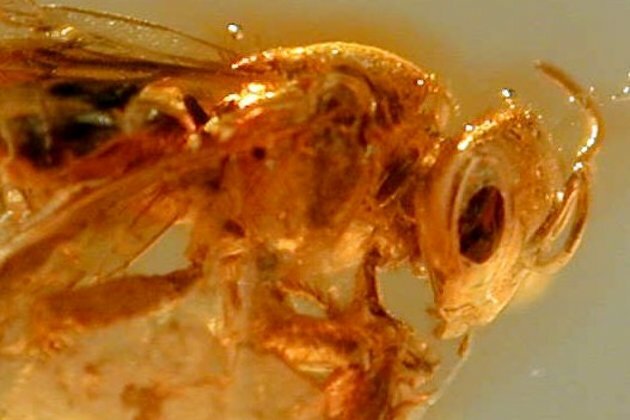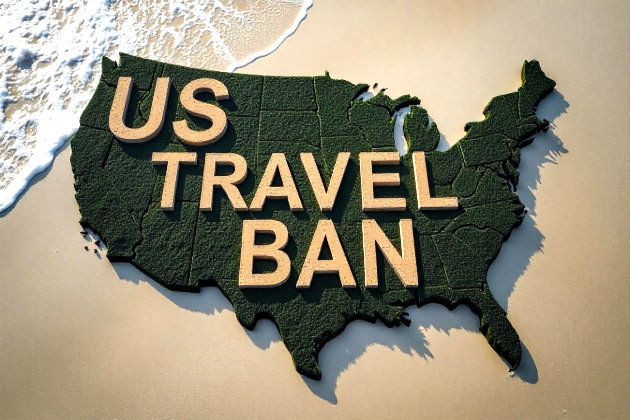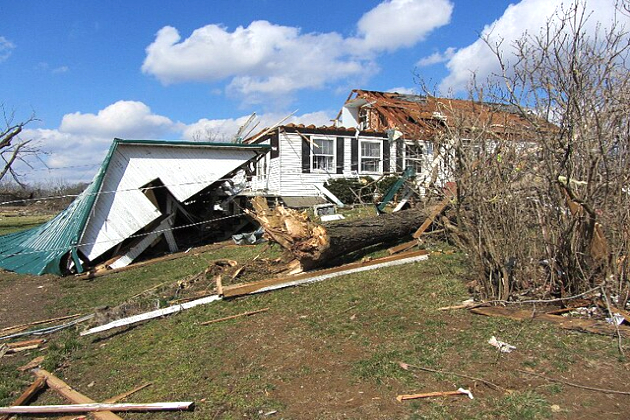Did bees live in the time of dinosaurs?
The Conversation
18 Nov 2019, 23:51 GMT+10

Curious Kids is a series for children of all ages. If you have a question you'd like an expert to answer, send it to [email protected].
Yes, and in fact they shared the planet for millions of years before a mass extinction wiped out dinosaurs, but spared bees and many other living things.
How do we know that bees were around when dinosaurs still roamed the Earth? The main evidence comes from fossils - the mineralized remains of long-dead organisms.
A lot has to go right for a dead creature to become a fossil. It has to be quickly covered by sediment before a scavenger has a chance to eat it - and the sediment has to be just right to preserve the details of its body. Then, millions of years later, that same sediment, now rock, has to become exposed through erosion so that people can find it and study it. When things go right, even a single fossil specimen can reveal a great deal.
Extinct animal species, known only from fossils, often look very different from creatures alive today. But scientists can almost always identify which branch of the tree of life they belong to, and thereby identify how they are related. The dinosaurs - T. rex, Velociraptor, Triceratops and the rest - seem almost fantastically weird, but their fossilized skeletons enable us to recognize them as reptiles.
The same is true for insects. Scientists can identify something as a bee by its distinctive features, such as the structure of its antennae, the shapes of its major body parts, and the pattern of veins in its wings.
Using these features, scientists have identified fossils of dozens of species of extinct bees. Some look like modern bees; others look quite different but are still recognizable as bees.
The oldest fossil bees look a lot like wasps. In fact, bees are thought to be a branch of the wasp family tree that evolved a vegetarian lifestyle, getting food from flowers instead of eating other insects.
The most exquisitely preserved fossil bees have been found in amber, which is fossilized plant sap. Perhaps these bees became trapped in sap while trying to collect it for constructing their nests - something many bees do today.
But how do we know how old any of these fossils are? It turns out the rocks that encase them have a built-in clock that reveals their age. The most common "radiometric clock" relies upon the decay of uranium into lead.
By knowing how much uranium and lead were present when the mineral rock was formed, how much is present now, and how fast this decay happens, we can reliably estimate the age of many ancient rocks, which tells us how long ago fossilized organisms lived.
The earliest dinosaurs appeared on earth around 245 million years ago, and dinosaurs were last seen when an asteroid hit the earth around 65 million years ago. The oldest fossil bees date from about 100 million years ago, which means bees and dinosaurs lived together for at least 35 million years, and possibly much longer.
Did a dinosaur ever get stung chomping into a plant where bees were nesting or collecting nectar and pollen? We can't know for sure, but fossils tell us it is very possible.
Hello, curious kids! Do you have a question you'd like an expert to answer? Ask an adult to send your question to [email protected]. Please tell us your name, age and the city where you live.
And since curiosity has no age limit - adults, let us know what you're wondering, too. We won't be able to answer every question, but we will do our best.
[ Insight, in your inbox each day. You can get it with The Conversation's email newsletter. ]
Author: Fred Dyer - Professor, Department of Integrative Biology, Michigan State University 
 Share
Share
 Tweet
Tweet
 Share
Share
 Flip
Flip
 Email
Email
Watch latest videos
Subscribe and Follow
Get a daily dose of Michigan Sun news through our daily email, its complimentary and keeps you fully up to date with world and business news as well.
News RELEASES
Publish news of your business, community or sports group, personnel appointments, major event and more by submitting a news release to Michigan Sun.
More InformationBusiness
SectionIsraeli government asks Musk to submit tender on vehicle-provisioning
Elon Musk's Teslas' are in the running to take over the transport of Israel's government officials. Musk's company, Tesla Inc., has...
Trump seeks delay in US Steel-Nippon legal fight, talks ongoing
WASHINGTON, D.C.: The Trump administration is seeking a delay in the legal battle between U.S. Steel and Nippon Steel over their blocked...
U.S. stock markets on the defensive Thursday
NEW YORK, New York - U.S. stocks were on the defensive Thursday as investors and traders weighed the Fed's policy decision of a day...
US expands LNG infrastructure, boosts capacity by 17.8 Bcfd
WASHINGTON, D.C.: The expansion of U.S. natural gas infrastructure in 2024 significantly boosted the country's ability to transport...
Audi to cut 7,500 jobs in Germany by 2029 in cost-cutting move
BERLIN, Germany: Audi has announced plans to cut up to 7,500 jobs in Germany by 2029 as part of a broader restructuring aimed at reducing...
FAA to propose new rules for expanding drone deliveries
SEATTLE/WASHINGTON D.C.: U.S. Transportation Secretary Sean Duffy said last week that the Federal Aviation Administration (FAA) is...
International
SectionDelta Jet's wing strikes runway during rough landing at LaGuardia
NEW YORK CITY, New York: A Delta Air Lines plane's wing hit the runway at LaGuardia Airport during a rough landing over the weekend....
Amid measles outbreak, cases in Texas, New Mexico climb to 317
AUSTIN/SANTA FE: Measles cases in Texas and New Mexico increased to 317 on March 18, up from 294 four days earlier, as the U.S. faces...
US weighs broad travel ban covering dozens of countries
WASHINGTON, D.C.: The Trump administration is considering strict new travel restrictions for citizens of dozens of countries, according...
US: Maine violated federal law by allowing transgender girls in sports
WASHINGTON, D.C.: The Trump administration announced this week that Maine's education officials violated federal law by allowing transgender...
Some states still under watch for wind and potential tornadoes
NEW YORK CITY, New York: Severe storms and tornadoes continued to threaten parts of Pennsylvania, New York, and several Mid-Atlantic...
United Nations building in Gaza destroyed, 1 dead, 5 injured
As Israeli tanks rolled into Gaza on Wednesday heralding a new ground invasion, a UN building was destroyed in a bombing, killing one...













